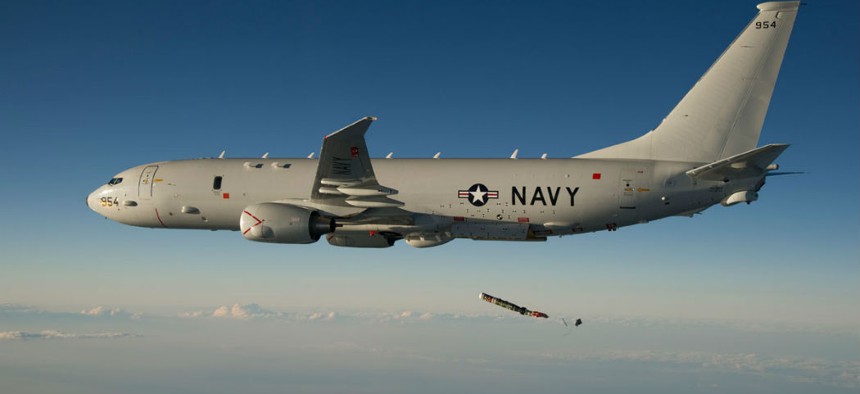Navy upgrades P-8s with Wideband Satellite Communications Radomes
U.S. Navy P-8A aircraft will be equipped with new satellite communications systems.
The U.S. Navy and Boeing are working to upgrade P-8 surveillance planes by installing Wideband Satellite Communications (WBSC) radomes and the necessary supporting infrastructure in each aircraft.
The integration, which upgrades P-8s to P-8As, will install a WBSC high-capacity satellite communications system. WBSC satellites are compatible with the Defense Satellite Communications System (DSCS) and Global Broadcast Service satellites. Eventually, WBSC will replace DCSC as the primary satellite communications system of the military once all six satellites are up and ready for use.
This new technology provides increased capabilities for C4ISR, battle management, and combat support information purposes, by improving satellite bandwidth and communication. WBSC offers 4.875 GHz of instantaneous switchable bandwidth, which is ten times the bandwidth offered by DSCS. Also, WBSC comes with 2.4 GB wideband capacity. The DSCS satellites combined do not provide this level of capacity.
The original Boeing P-8 Poseidon aircraft, which will be receiving the upgrades, has been used by the U.S. Navy for anti-submarine warfare, anti-surface warfare, and blockade purposes since it was first produced in 2013.
This aircraft includes electronic support measures to detect, locate, analyze, and intercept sources of electromagnetic energy—such as combat vehicles, ships, or aircraft—to protect from potential threats. The P-8 can also carry a variety of weapons, including torpedoes, depth charges, and anti-ship missiles.
Adding WBSC systems will improve the P-8A’s ability to detect electromagnetic sources because it can recognize foreign frequencies that other satellite communications systems cannot detect. Therefore, the U.S. Navy will be able to recognize potential threats earlier and more efficiently.
When asked about the state of these upgrades, Boeing’s director of P-8 Programs Communications said, “As far as production of the aircraft, we continue to deliver on or ahead of schedule and are at a production rate of 1 ½ aircraft per month. We just this week ferried our 60th P-8A Poseidon to the U.S. Navy at NAS Jacksonville. We have also delivered four P-8A aircraft to the Royal Australian Air Force and eight P-8I aircraft to the Indian Navy.”
Work will be performed in Seattle, Wash., and is expected to be completed in October 2018.




